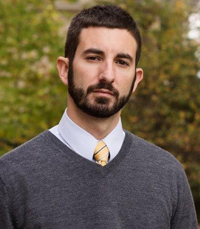Project by LSAC, law schools association aims to boost understanding--and appeal--of law profession

Kellye Y. Testy, president and CEO of the Law School Admissions Council. Photo by Greg Olsen/University of Washington School of Law.
The Law School Admission Council and the Association of American Law Schools are coming together on a project to improve how the public sees the prospects of a legal education and the legal profession.
Consisting of “multiple web-based and social media initiatives” the two groups say in a press release, they want “to leverage both organizations’ substantial platforms to reach a wider audience of prospective students and others interested in law.”
The plan is to create a digital strategy that includes a new website and social media campaign to reach potential law students early, either before or during their undergraduate years. The campaign will provide information on what happens on law campuses, possible uses of a law degree, and the law school application process.
The two organizations will also work together to improve resources for college prelaw advisers and their students.
“Law is often seen pretty narrowly by society,” said Kellye Testy, LSAC’s president and CEO. “The effort is really to help broaden public understanding of law and thereby help especially high schoolers and college students understand that maybe they can match the passion they have for something with law study in a way that they may have not understood before.”
The Great Recession took quite a toll on law school admissions. According to U.S. News & World Report data, the average number of applicants at the top 14 law schools decreased by 20.6 percent, and that of all other ranked law schools decreased by a staggering 52.3 percent between 2008 and 2016.
But last year, the LSAC noted a pronounced increase in the amount of people taking its Law School Admissions Test, which some see as evidence of a “Trump Bump.” This year the LSAC reported a 10.6 percent increase in law school applications.
Still, many of the leading voices in legal education have expressed concerns about public perception of law schools. Vikram Amar, dean of the University of Illinois College of Law, asserts that the news media have not focused enough on law schools that have been successful in providing their students with ample professional opportunities.
“There are problems that exist in some [law schools] that don’t exist at others,” Amar said. “However, the media tends to sweep with a broad brush; if it finds problems at one law school, then it infers from that that there is a problem with all of legal education.”
Sondra Tennessee, the associate dean of students for student affairs at the University of Houston, believes the best way for LSAC and AALS to address these misconceptions is to concentrate on both the professional development and the career opportunities that a legal education provides.
“I think they really have to emphasize the job opportunities and what people do with a law degree,” Tennessee said. “These opportunities are not just litigation and going to court, because students receive analytical training in areas such as corporate transactions and the field of compliance which are very instrumental to other opportunities that they may not have thought of.”
Tennessee is especially excited about the partnership between LSAC and AALS, which she believes will help create the synergy needed to tell a complete story will meet the expectations of prospective students.

Kyle McEntee
However, Kyle McEntee, the executive director and co-founder of Law School Transparency, maintains that a public relations campaign can’t overcome the challenges facing the market for lawyers.
“People are not going jobless when they graduate because they don’t have skills to practice law. They’re going jobless because there are too many graduates for how many jobs there are,” said McEntee. “And that’s what I think that a PR campaign can’t overcome.”
While ABA-reported figures for law grad employment have shown percentage increases in long-term, full-time positions where bar passage is required or a J.D. is preferred for the graduating classes of 2015 and 2016, the actual number of such jobs has declined.
One way Testy hopes to address these concerns is by focusing on the gap in access to justice. She wants to make law schools more aware of this so that they can help budding lawyers understand how to create ways to do legal work through entrepreneurial approaches that will both close the gap and decrease dependence on existing law firms for employment.
“There is a huge unmet need for lawyers who represent individuals who are not in the top 1 percent,” said Amar. “Law schools need to think about how train people to do those jobs; they will perform a very important function for society.”
Testy said her organization also plans to start a LSAC Presidential Innovation Fellowship for recent law school graduates next year. The fellow must take an entrepreneurial approach to their practice to help those who can’t afford legal representation, she says, and will be given “a one to two-year ‘incubator’ support structure to assist the fellow in advancing their project to sustainability.”
Updated at 4:48 p.m. to correct the name of the Association of American Law Schools.



